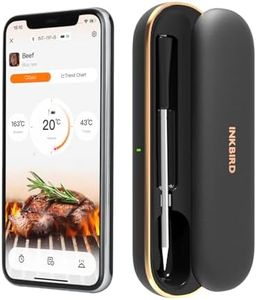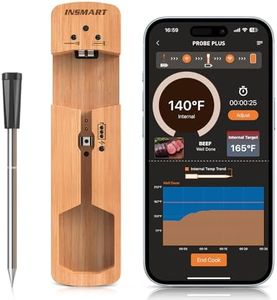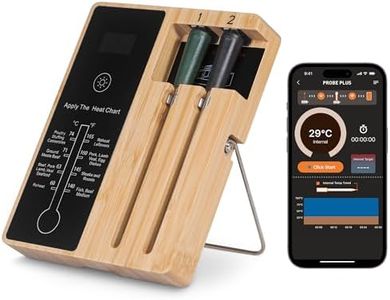We Use CookiesWe use cookies to enhance the security, performance,
functionality and for analytical and promotional activities. By continuing to browse this site you
are agreeing to our privacy policy
10 Best Bluetooth Meat Thermometers
From leading brands and best sellers available on the web.Buying Guide for the Best Bluetooth Meat Thermometers
Choosing a Bluetooth meat thermometer is all about making your cooking safer, easier, and more precise. These devices let you monitor the temperature of your meat wirelessly, often through an app on your smartphone or tablet. This means you don’t have to keep opening the grill, oven, or smoker to check the temperature—reducing guesswork and helping to cook food perfectly. To pick the right Bluetooth meat thermometer, it’s important to focus on the factors that will suit the way you cook, how hands-on you want to be, and your preferred level of technology.Temperature AccuracyTemperature accuracy refers to how close the thermometer's reading is to the real temperature of your meat. Accurate readings are important to ensure the meat isn’t underdone or overcooked, which affects flavor and safety. You'll often see accuracy described with a plus or minus degree range (like +/-1°F or +/-2°F). For most home cooks, a thermometer with up to +/-2°F accuracy is sufficient. If you focus on precision cooking (for example, with expensive cuts or when following strict recipes), look for the lowest margin of error.
Bluetooth RangeBluetooth range tells you how far you can be from the thermometer and still get a signal on your phone or tablet. Ranges can vary from about 30 feet to over 300 feet. A shorter range is usually enough for indoor use or when you'll stay near the kitchen, while longer ranges help if you'll be further away—like outside in the yard or moving around your house. Consider your typical cooking setup and pick a range that matches your habits.
Number of ProbesThe number of probes determines how many foods you can monitor at once. One probe is enough if you usually cook a single piece of meat or one type of protein at a time, like a roast or chicken. Two or more probes allow you to track different meats or pieces (for example, chicken and steak with different doneness). If you often cook for groups or like comparing different cuts, more probes offer more flexibility.
Probe Length and DurabilityProbe length affects how deeply you can insert the sensor into thick cuts of meat, which is important for larger roasts or turkeys. Durable probes are essential, as they need to withstand high temperatures and frequent use. For most people, standard-length probes work for steaks, chicken breasts, and burgers. For big cuts, look for longer probes that reach the thickest part for an accurate reading. If you use the thermometer often or in tough conditions (like a smoker or barbecue), durability is key—look for probes rated for high heat and water resistance.
App Features and Ease of UseThe companion app is how you interact with your Bluetooth thermometer, so features like preset temperature alerts, timers, cooking guides, and historical tracking can improve your experience. A simple, straightforward app helps beginners, while advanced users might prefer custom alerts or detailed tracking graphs. Think about whether you want lots of features to experiment with, or prefer a basic app that’s easy to navigate.
Battery LifeBattery life determines how long the thermometer operates between charges (for wireless probes) or how often you’ll need to replace batteries. Longer battery life means less interruption during long cooks, such as when smoking ribs or brisket. If you do a lot of slow cooking or forget to charge devices, look for models with long-lasting batteries or easy ways to replace or recharge them.
Temperature RangeThis is the minimum and maximum temperature the thermometer and probes can handle. For most grilling, roasting, or smoking, a typical temperature range is enough. However, if you plan to deep-fry, candy-make, or cook at very high temperatures, make sure your thermometer supports those higher ranges. Pick one that covers any specialty cooking you plan to do.


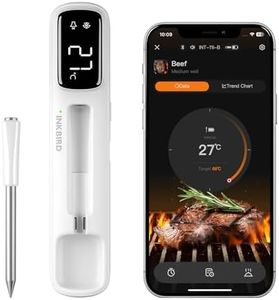
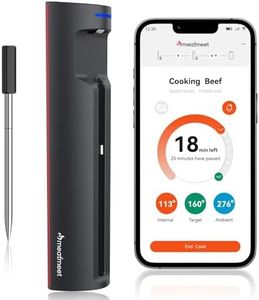
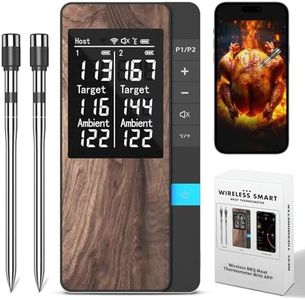

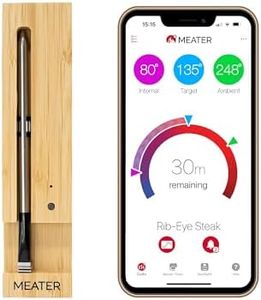
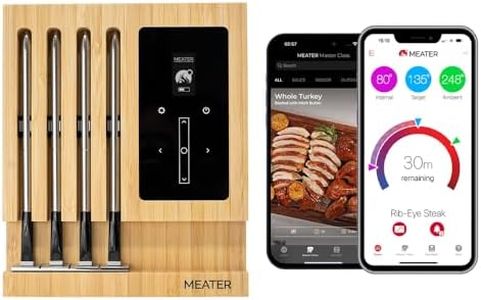
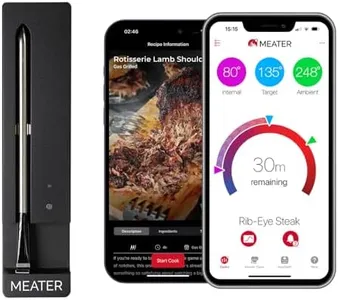
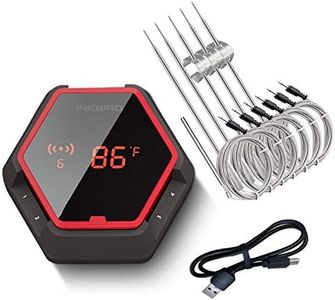
![[New] MEAT](https://images-proxy.bestreviews.guide/AnhXhgk_aSYDJrVANJgGmv6iGjc=/0x300/https://m.media-amazon.com/images/I/41K-AL+1GGL._AC_CX679_.jpg)

